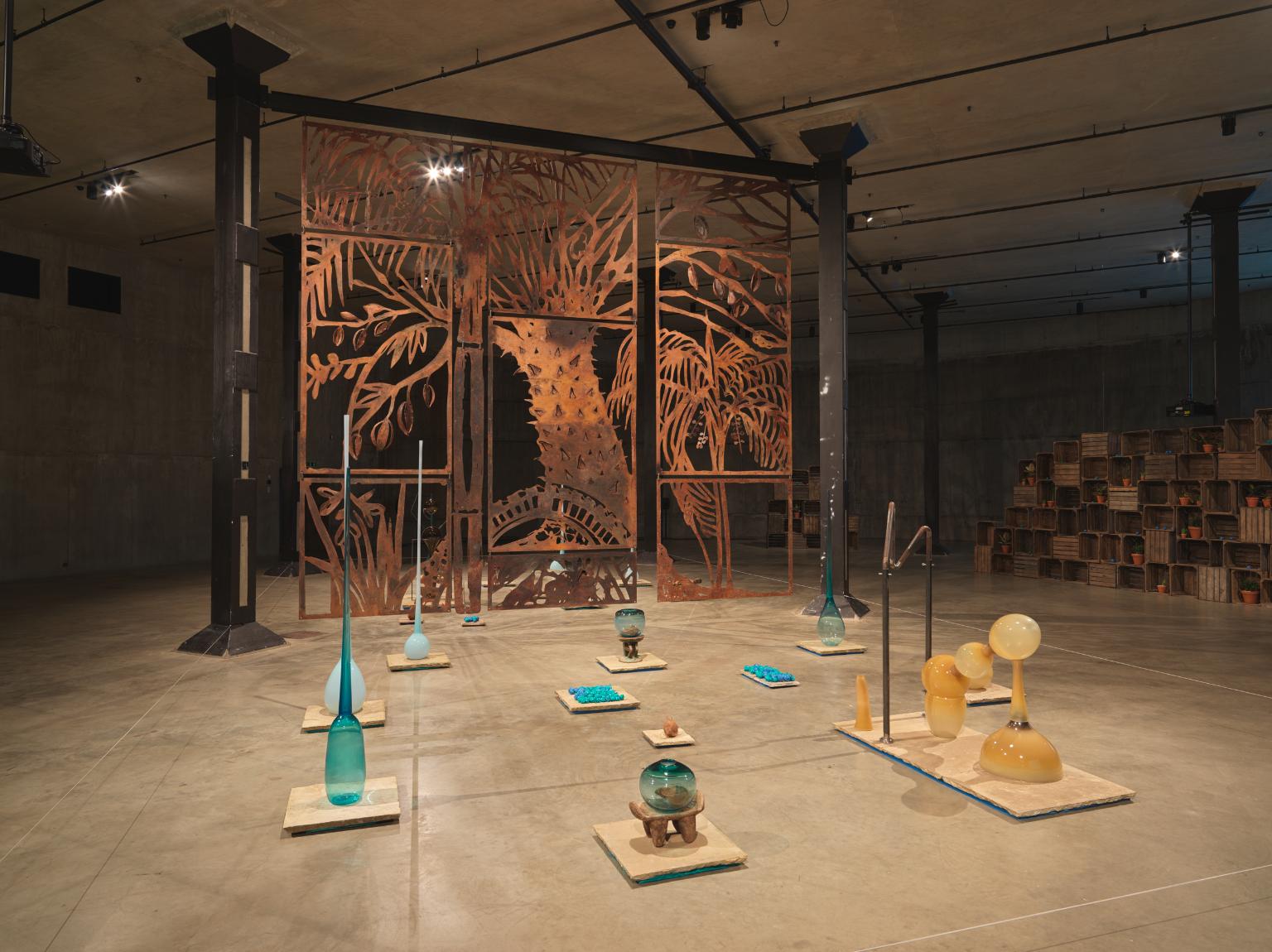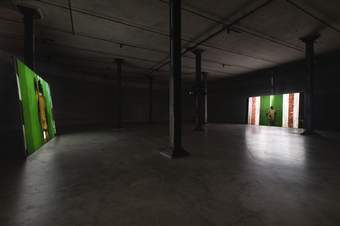Nira Pereg depicts a choreographed interchange between Jewish and Muslim communities, reflecting the bureaucracy of occupation
ABRAHAM ABRAHAM SARAH SARAH was filmed in subterranean chambers in Al-Khalil, or Hebron, the largest city of the West Bank. Known to Muslims as Al-Haram Al-Ibrahimi (Sanctuary of Abraham) and to Jews as Me’arat Ha-Machpelah (Cave of the Double), they are believed to be the burial place of the biblical prophet Abraham, his wife Sarah, and their descendants. Being one of the most sacred sites in the Abrahamic belief systems and an active place of pilgrimage for both Muslims and Jews, this complex is in the heart of the political turmoil in the West Bank.
The site was the scene of a massacre in 1994 when a US Israeli extremist named Baruch Goldstein opened fire on Palestinian Muslim worshippers, killing 29 and injuring 125 people. In response, the Israeli government assigned a special committee to issue protocols on the strict division of the site into separate areas for each religious community. Pereg’s work follows one of the clauses in that report – an exception enabling each community to have full use of the space for 24 hours, 20 times a year, in accordance with religious holidays. Following this temporary ’change of hands’, ABRAHAM ABRAHAM SARAH SARAH navigates the routine maintenance of the Israeli occupation of the West Bank.
Spaces are swiftly cleared of their usual religious artefacts, inspected by an Israeli military unit, and stand vacant for a few short moments. Then, worshippers of the other faith enter with their own artefacts and occupy the chambers for 24 hours, when the process is reversed, returning the spaces to their former use. Filmed only months apart, the scenes closely reflect each other. ABRAHAM ABRAHAM follows preparations on a Muslim holiday in July 2012, when the chambers are turned into a mosque. SARAH SARAH shows the reverse process on a Jewish holiday in November 2012, when the site becomes a synagogue. All human voices are edited out of the film – Pereg focuses on the ambient sounds of objects taking part in the ritual of transformation.
Israeli settlers have occupied parts of the city Hebron/Al-Khalil since 1968 and, in 1997, it was divided into Palestinian and Israeli controlled zones. The ongoing Israeli occupation is considered illegal under international law, in alignment with the United Nations. In 2010 the state of Israel declared the caves a national heritage monument, and in July 2017 UNESCO’s World Heritage committee recognised it as part of the State of Palestine. Like the city, the monument is shaped by a complex spatial arrangement.
Pereg exposes the power embedded in administrative structures. She says, ‘I reflect on what I look at as political choreography; an absurd duet, re-enacted in the work but also between the work and the viewer, who is forced to participate in order to observe.’ The two-screen presentation plays on the architectural division, which evokes the bureaucratic attempts to impose an impossible symmetry.
Art in this room


